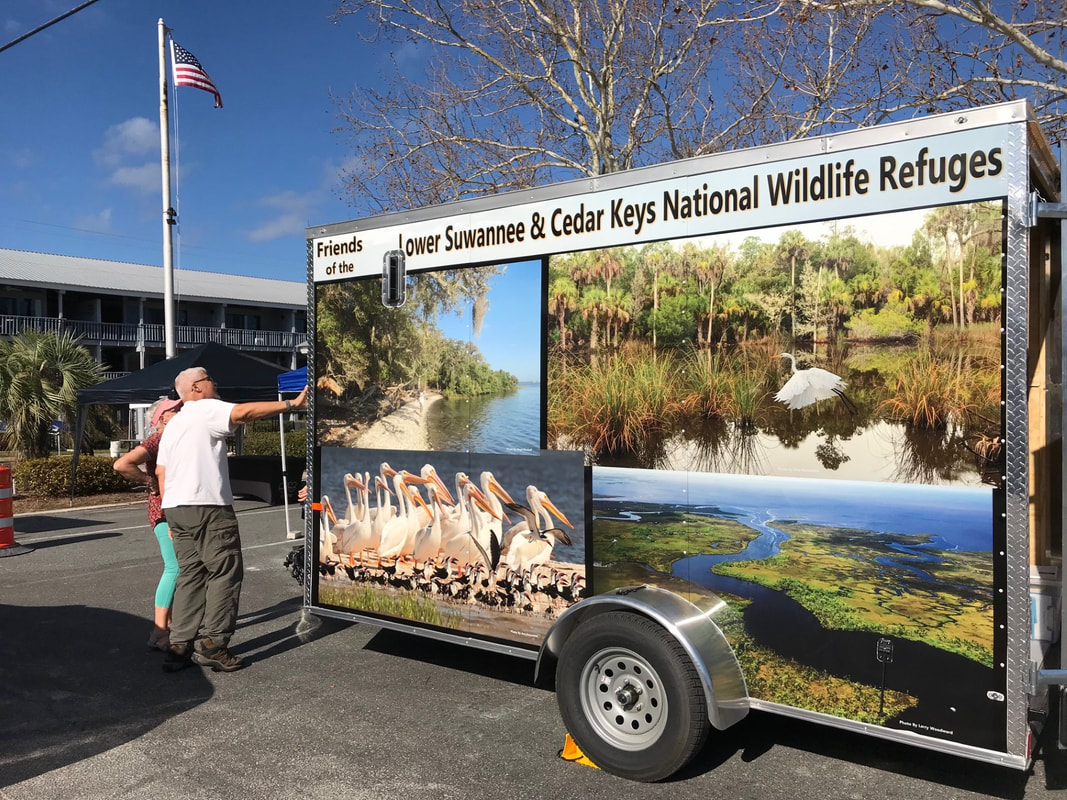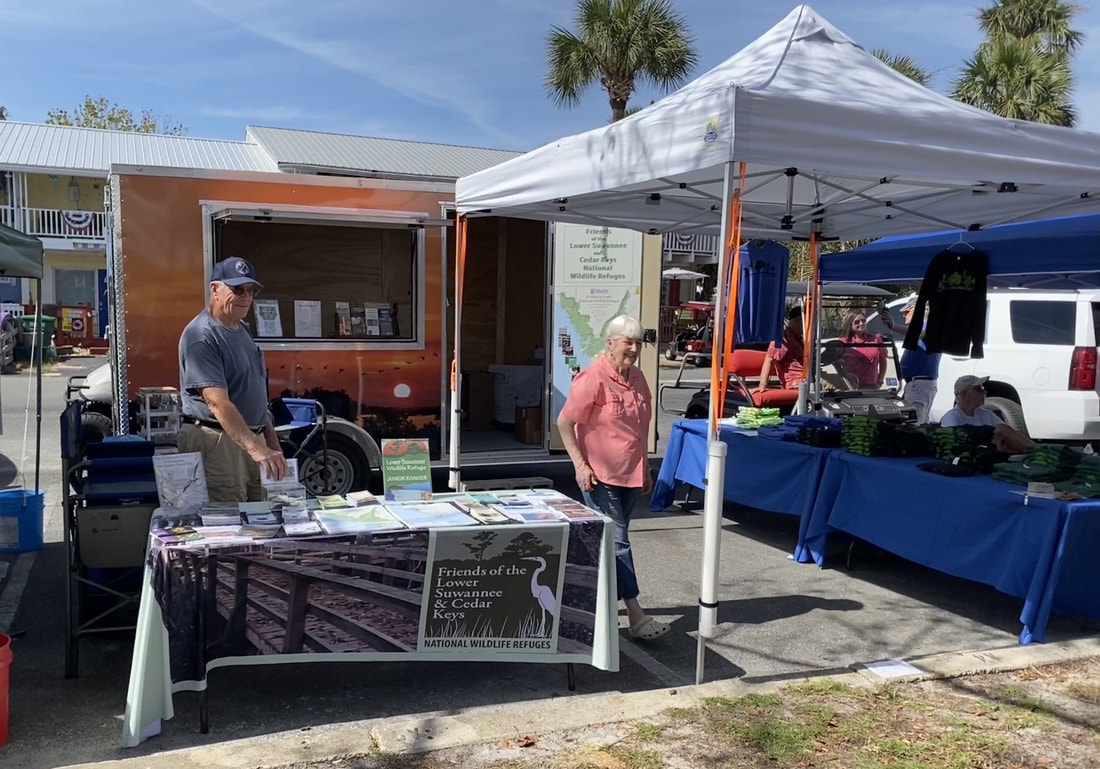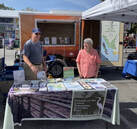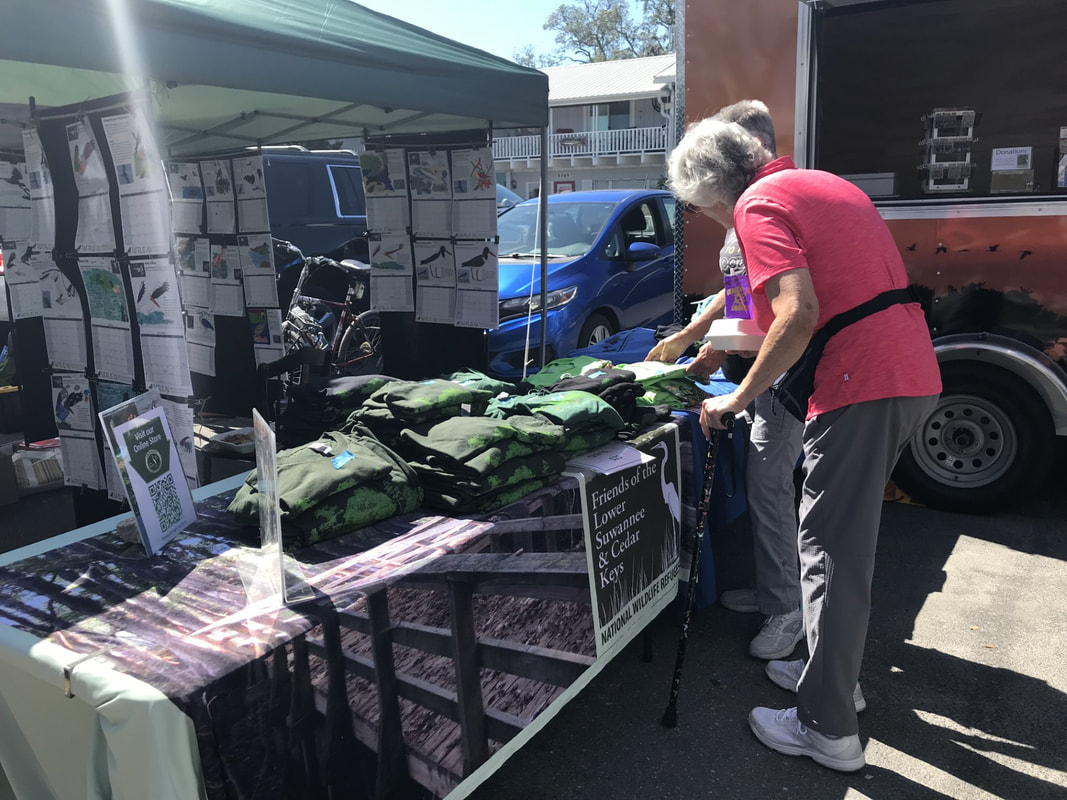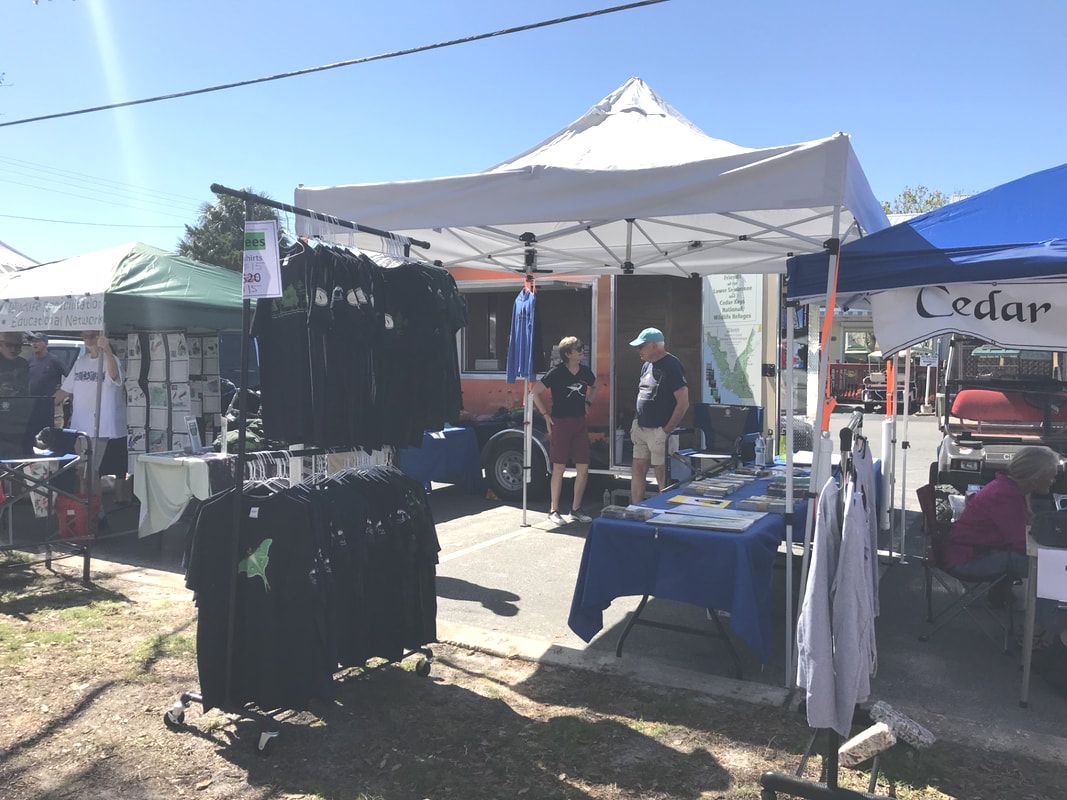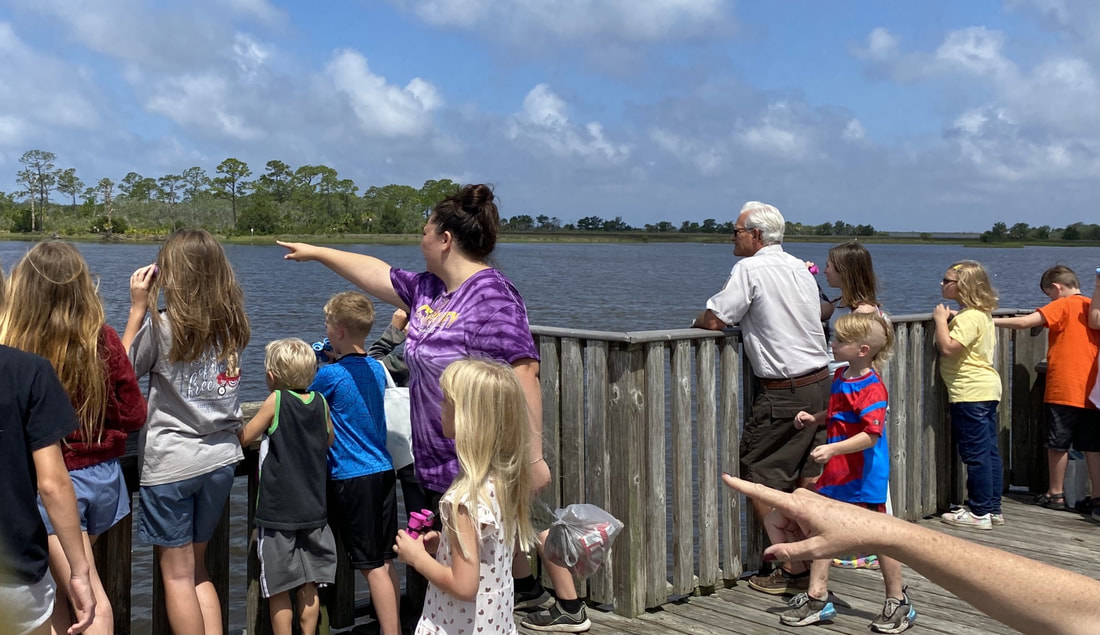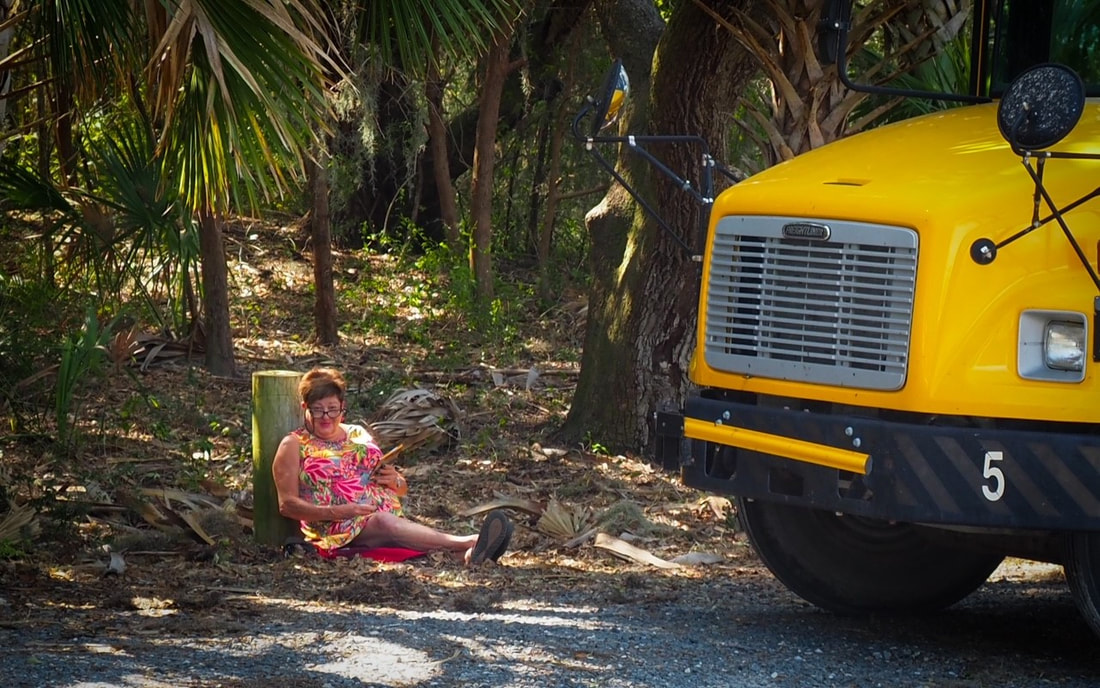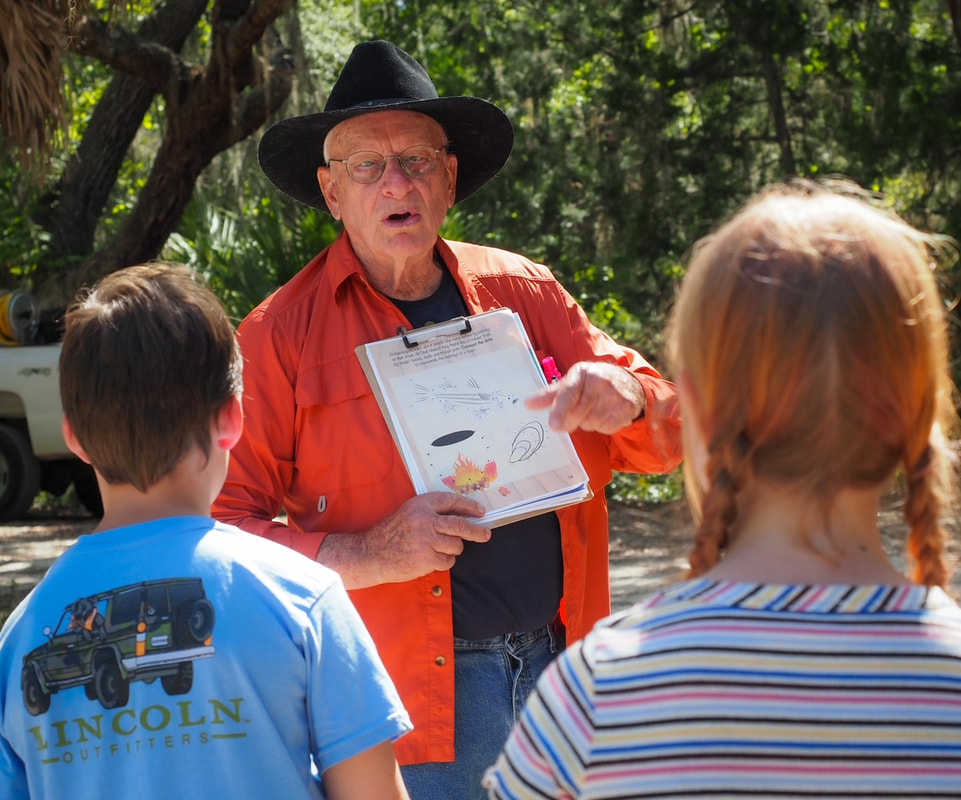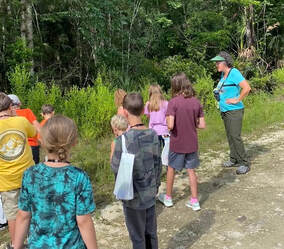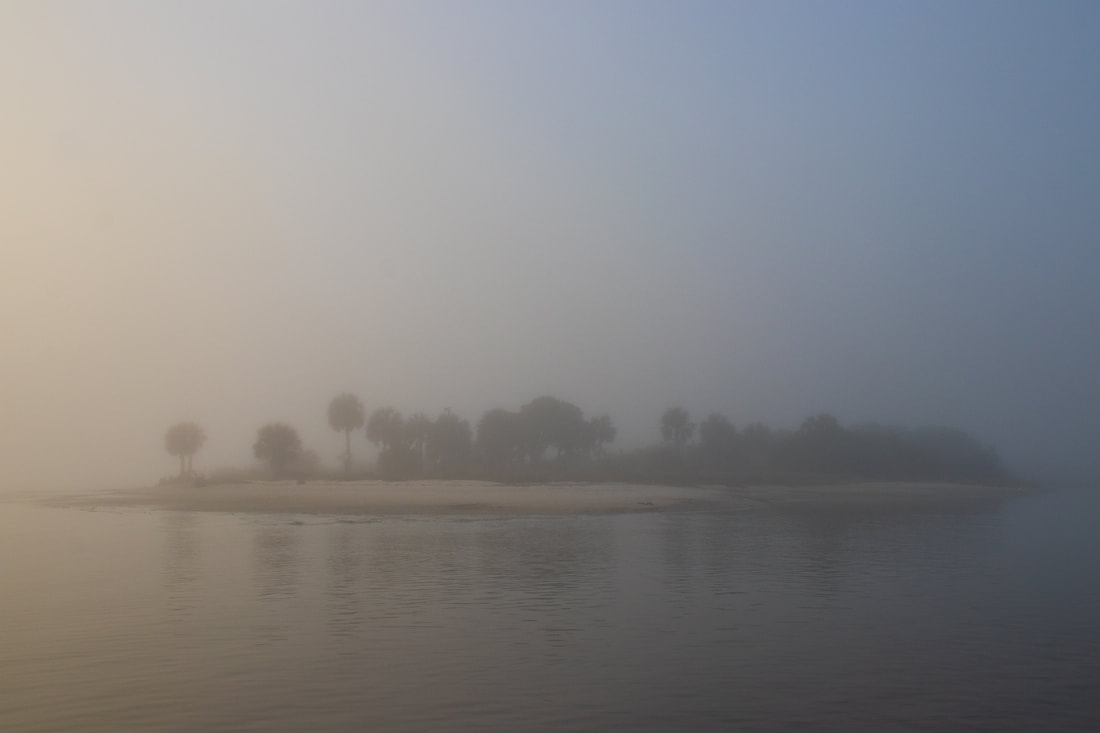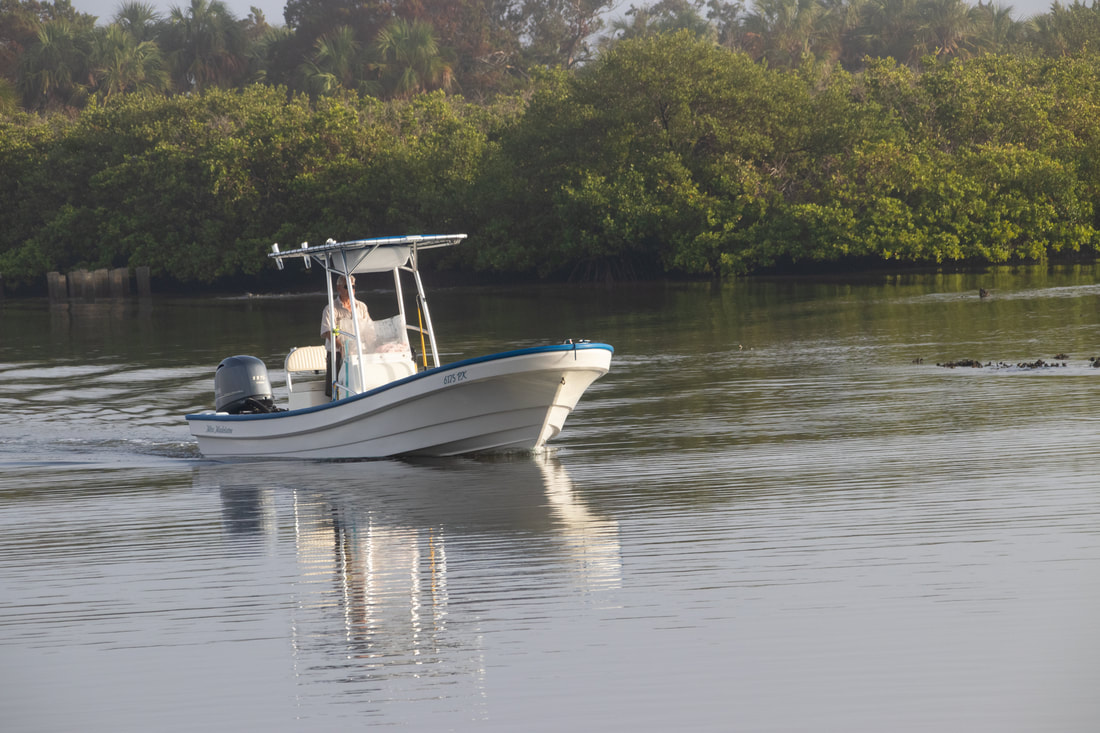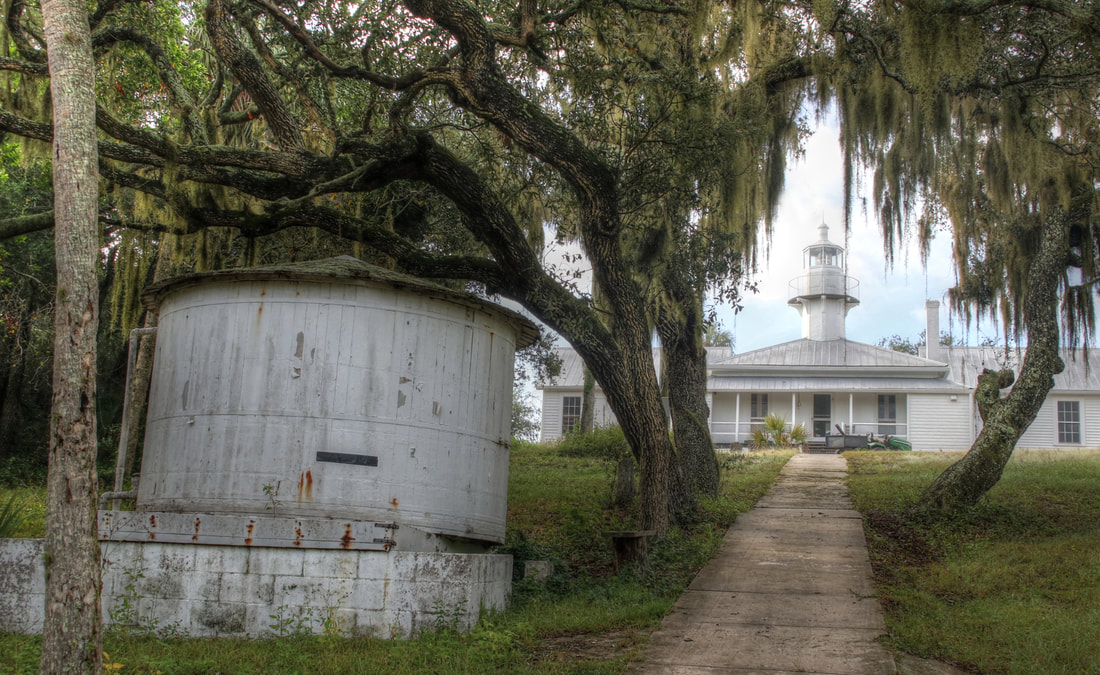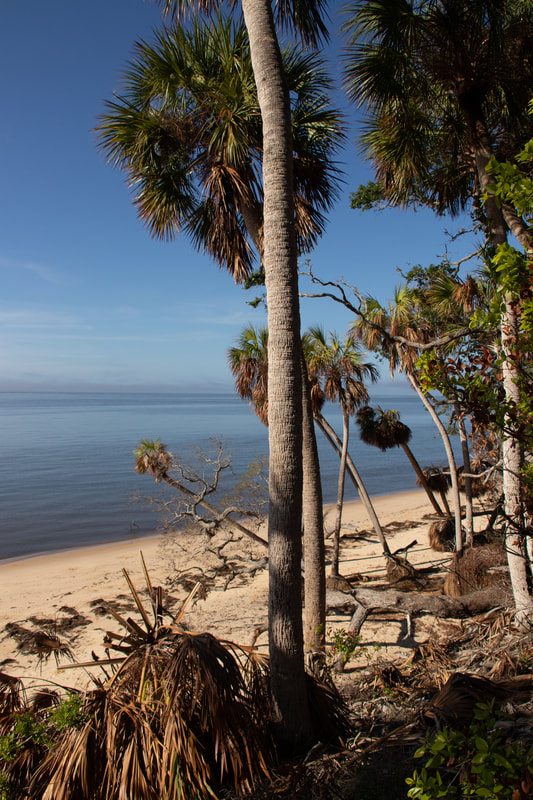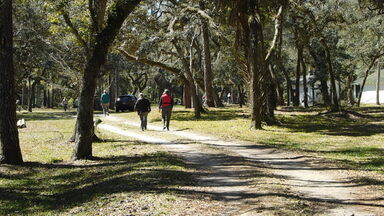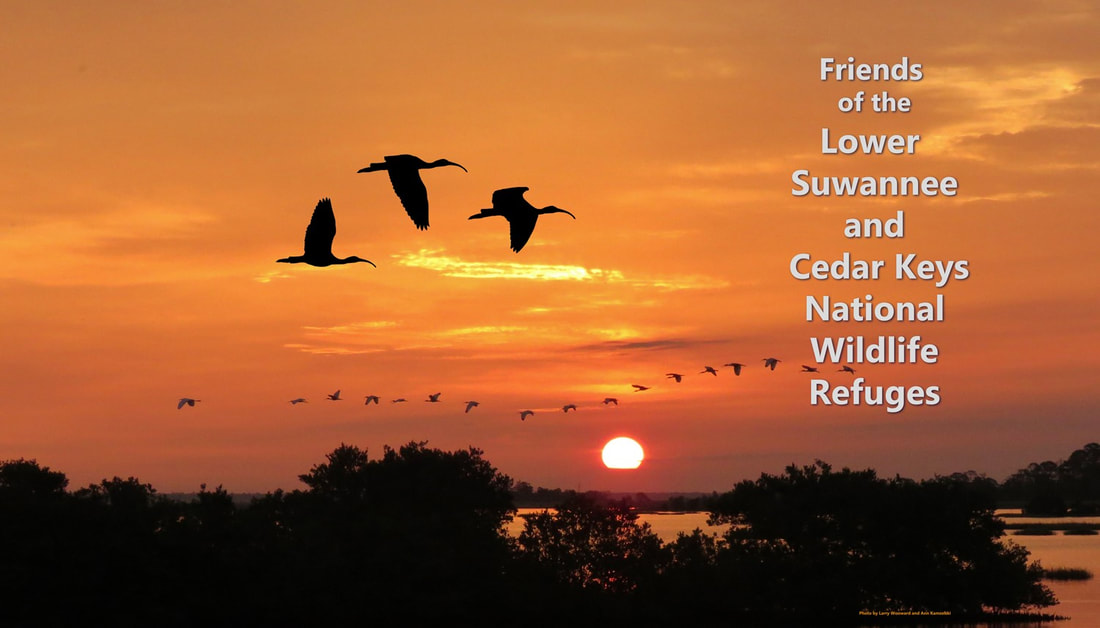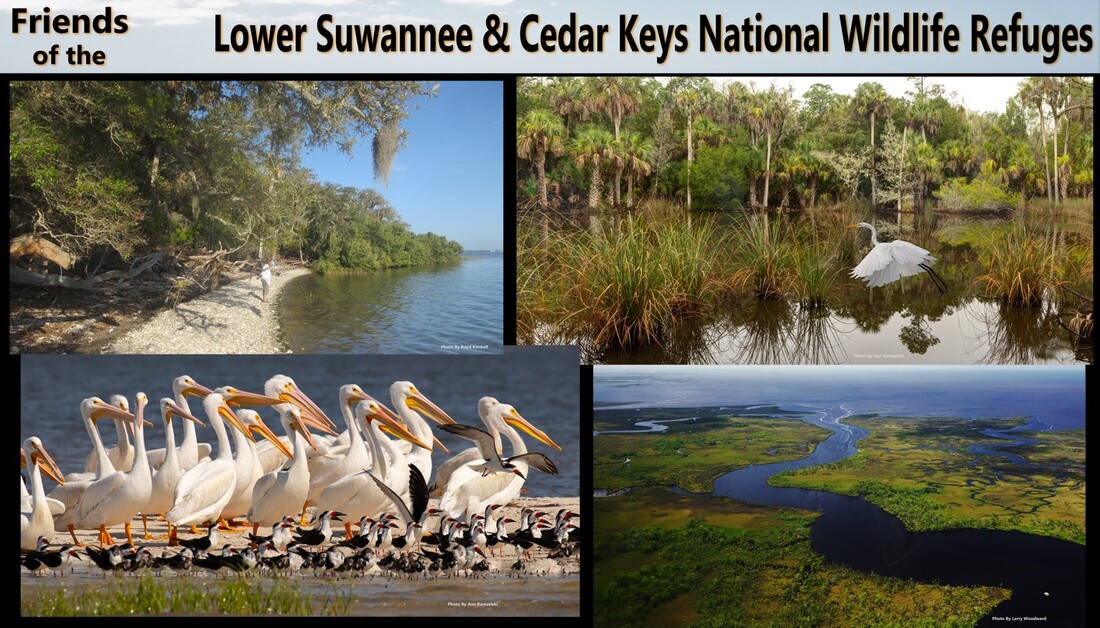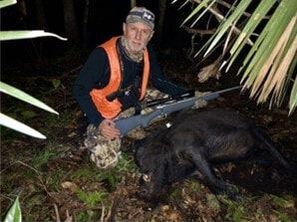|
The new trailer was a huge hit at the October 21 Cedar Key Seafood Festival, its roll-out event. Friends did not yet have the storage units or steps installed inside because it had only been "home" from being "wrapped" in photos for a few days. However, the inside walls and floors were painted and all the visitors had appropriate praise for its beauty.
Its second big event was the November 11 Junior Ranger Day, where it stood proud again. Expect to see it around more often in the future.
0 Comments
Many thanks to all the volunteers who staffed the Friends booth at the Cedar Key Seafood Festival -- Ann Kamzelski, Jeri Treat, Peg Hall, Debbie Meeks, Denise Feiber, Jay Bushnell, Carol Lang, Judy Johnson, Ron Kamzelski, and Ginessa Mahar. More than 500 visitors came by to admire the new Community Outreach Trailer and learn more about how the Refuges are doing after the destruction of Hurricane Idalia. Even the folks from FEMA came to visit Friends. The volunteers shared maps and brochures with many Refuge newcomers and sold lots of Friends awareness-building tee shirts, hats, and earrings. Much fun was had by all.
USDA's Wildlife Services, in partnership with the U.S. Fish & Wildlife Service National Wildlife Refuge System, will conduct feral swine control, outside of scheduled hunt seasons, on the Lower Suwannee National Wildlife Refuge and sample for African swine fever. They will be using many methods including thermal imaging, helicopters, trapping, and traditional shooting. Feral swine are considered invasive species that present a clear harm to native plants and wildlife. African swine fever is a deadly pig disease that spreads rapidly and affects domestic and wild swine. While not a threat to human health, the virus could devastate America’s swine, pork industry, and food supply.
Fortunately, it does not affect Swamp or Skunk Apes! Read Dan Chapman's Hunting and Swamp Ape story here. Friends will update this information when the program begins. A 4th grade class from Old Town will be learning about the Refuges this fall using the Junior Ranger workbooks and coming on a field trip in November to see and experience the Lower Suwannee Refuge for themselves. They follow in the footsteps of a similar class that earned their Junior Ranger badges last May and another group from the Cedar Key Summer Program that earned theirs in June. Friends works with the teachers and Refuge staff to help the students through several stations where the explore different habitats, work nature puzzles, draw animals and plants they observe, and record observations as citizen scientists. It takes at least two volunteers for each station. Friends could really use some help with this fun-for-all undertaking. If you could join the effort, please email [email protected] The October Open House, the first since the hurricane, attracted fewer visitors than usual. The trail down to the beach side of the island was destroyed and the cliff further eroded, making it necessary to build a longer new trail that is more difficult to walk.
Thanks to Friends' member Ann Kamzelski for the photos which she took while volunteering at the October Open House. It is important for visitors to note that Seahorse Key is an island almost 3 miles from Cedar Key. Access is only by boat. There are no amenities, such as food or water on the island. Restroom facilities are limited. Should there be a medical or other emergency requiring professional assistance or evacuation, response times could be lengthy. Please plan with this in mind. Seahorse Key is wonderful, but it is not a walk in the proverbial park. On the Vista property was a nice double-wide manufactured home that had been used by the families that provided care for the property before the donors turned it over to the Refuge last year. The home was no longer needed and the space can be put to other use as the property is developed as a visitor area. Friends was able to arrange for the home to be purchased and moved to be used by a family in the area. The proceeds from the sale of the home will be used to help with the costs of developing Vista and restoring the buildings that will be saved for future use. Work is proceeding. The condemned buildings are being removed. The old septic system has been pumped and inspected, the old concrete pads from the double-wide are being removed.
Work on the Cook's House is quickly moving from the architectural phase to the repair phase. The money from the caretaker home is a welcome infusion. 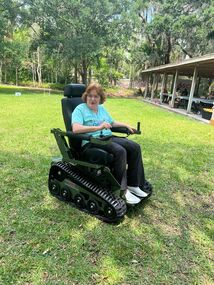 EcoRover demo at an Orlando park. EcoRover demo at an Orlando park. Friends' board member Boyd Kimball had arranged for a demonstration at the Refuge of the EcoRover tracked wheelchair in December. The Wish List had the funding for the demo as a top priority last month. Unfortunately, the demo has to be postponed indefinitely because of the illness of one of the EcoRover principals. Friends is working on planning another accessibility activity and will post an update soon. At the top of the Wish List this month is a computer for the Annual Meeting presentations and to show Refuge slides in the Mobile Outreach Trailer.
Friends Past-President Debbie Meeks and Deputy Refuge Manager John Stark drove to southern GA to bring the new Mobile Outreach Trailer home to the Refuge headquarters. The "graphics wrap team" . . . Denise Feiber, Debbie Meeks, Peg Hall, and Ann Kamzelski . . . kicked into overdrive. Debbie painted the inside of the trailer walls and the floor. Orders were placed for shelving and peripherals. The Wrap Spot in Gainesville agreed to squeeze our job in this week in time for the Cedar Key Seafood Festival. It is really happening. Come to the Seafood Festival and visit this new member of the Refuge/Friends' family. It will be at the City Park, along A Street. In the next News Brief, there will be pictures of it in its wrapped beauty at the Festival.
Three years ago this month, US Fish and Wildlife Public Affairs specialist Dan Chapman published a story about hunting on the Lower Suwannee National Wildlife Refuge. It has since been archived from the USFWS's website. We thought our hunters and other visitors might still enjoy it and thus are reprinting it here with Dan's permission. Thanks for the fun read, Dan. We look forward to your next visit to our Refuges. Not Even the Swamp Ape Legend Deters Hunters from Flocking to the Lower Suwannee National Wildlife Refuge
by Dan Chapman, public affairs specialist
October 28, 2020 Chiefland, Florida – If ever there was a time to get out and into the woods and hunt, this pandemic-riven season is surely it. But beware the Swamp Ape.
The what? Swamp Ape. Skunk Ape. Moth Man. Whatever you call it, some Big Bend hunters swear they’ve seen a large half-man, half-beast creature prowling the Lower Suwannee National Wildlife Refuge. Andrew Gude, refuge manager, felt compelled to address the reports - or myths - in the 2020-21 hunt brochure: “There is no taking of Swamp or Skunk Apes,” it reads. Gude is skeptical of the beast’s existence, though he remains open to the possibility. And he doubts fears of any hairy, smelly, eight-foot tall creature will keep hunters from heading into the refuge’s swamps and pine forests and a much-needed opportunity to distance themselves from their Covid-infused daily lives. “There’s a trend, overall, and an uptick in hunters here at the refuge,” Gude said recently. “Hunting allows folks to go out and maintain distance from other people. You don’t want to be around anybody else anyway.” The U.S. Fish and Wildlife Service recently expanded opportunities for hunters and anglers at 147 refuges and hatcheries nationwide. The Service added 1.4 million acres the year before. More than 4 million acres, overall, has been opened to the rod and gun crowd. In addition, more than 110 new or expanded hunting and fishing opportunities - new species, acres, and times to hunt and fish - will be offered to more closely align federal and state rules. More than 2.4 million “hunting visits” took place during the most recent fiscal year - up 2.3 percent over the previous year - according to newly released statistics from refuges across the country. Hunting and fishing generate millions of dollars in revenue for states each year via the sale of licenses, tags and excise taxes on firearms, ammo and sport fishing equipment. The money helps state wildlife agencies manage their public lands and at-risk species. “When I first moved down here I mandated that we get as close to state rules as we can,” said Gude, who arrived at Lower Suwannee nine years ago. “We probably have the most hunting opportunities of any refuge outside of Alaska. We have 200 days of aggregate hunting - the number of waterfowl, deer, hog, turkey and small game days combined. And north Florida has a huge hunt culture. We’ve always been pretty popular here.” The refuge covers 53,000 acres of salt and freshwater wetlands, cypress swamps, hardwood forests and old pine plantations - enough varied habitats to satisfy the most discerning of hunters and fishers. Unlike most refuges created to protect wildlife, Lower Suwannee was established in 1979 to ensure the water quality of the famed Suwannee River. The fresh water mixes with the Gulf of Mexico’s salt water to create a fertile estuary that nourishes sturgeon, migratory shorebirds, wading birds, and waterfowl, while attracting commercial and recreational fishermen. The refuge straddles 20 miles of the Suwannee River (“way down upon the Swanee River”) and 30 miles of relatively untrammeled Big Bend coastline. It’s riddled with hiking and paddling trails, old logging roads, boardwalks, and fishing piers. The nine-mile Nature Drive offers easy access to prime hunting and fishing grounds. A week before archery season began, in late September, hunters were doing recon and hauling in deer stands. Greg Lang already knew where he wanted to go. He has lived in nearby Cedar Key for 35 years and hunts, fishes, bikes Lower Suwannee maybe 60 times a year. Deer. Turkey. Ducks. Hogs. “I stepped on an alligator crossing a creek once,” said Lang, vice president of an environmental engineering firm. “The old-timers tell me I was really lucky I stepped on his head. If I’d stepped on his back, he would’ve grabbed my leg.” He continued, “That place is very special. It’s a lot of wet swamp, some of it very thick. It gives me more of a challenge. There’s a couple of spots close to the Suwannee River near some oak hammocks where the acorns are starting to drop. All in all, it’s a challenging place to hunt.” Archery season got off to a rousing start this year. Gude’s cell phone, whose number he readily shares, has been blowing up with hunters asking all sorts of permit, season, access and tree-stand questions. Calls from Tampa, Sarasota, Gainesville, Georgia. Seems people are keen to get out of the house and into nature and, temporarily, leave Covid behind. “I am absolutely sure that this health emergency makes people appreciate the beauty around them and what they can do to stay healthy,” said Lang, a longtime member of the friends’ group that supports the Lower Suwannee refuge. “Bottom-line, if you spend more time in wilderness you’re healthier.” As long as you don’t come across the Swamp Ape. Similarly hairy sightings have been reported in the Everglades and the Okefenokee too. Thirty-five years traipsing across Lower Suwannee and Lang has never seen the legendary creature. He’s not certain it exists. “I want to believe in it,” he said, “but this is the Redneck Riviera so most of us who play outdoors look and smell like Swamp Apes anyways.” |
Archives
June 2024
|

Friends of the Lower Suwannee & Cedar Keys National Wildlife Refuges
P. O. Box 532 Cedar Key, FL 32625 [email protected] We are a 501(c)(3) nonprofit organization. |
|
